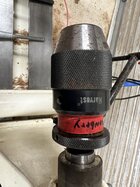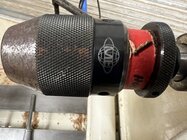I have observed turners doing a couple of things with chucks that make me wonder.
1. I see turners tightening the chuck with all their might. That doesn't seem necessary and can actually make the tenon weaker.
2. After they tighten the chuck with all their might, they rotate 180 degrees it and tighten the opposite pinion. Why? Habit?
Curious what you all think.
1. I see turners tightening the chuck with all their might. That doesn't seem necessary and can actually make the tenon weaker.
2. After they tighten the chuck with all their might, they rotate 180 degrees it and tighten the opposite pinion. Why? Habit?
Curious what you all think.


